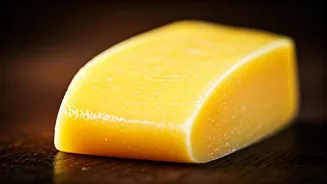Ghee Quality Concerns
The Andhra Pradesh government's recent revelation of foreign fats in cow ghee used for Tirupati laddu sparked a controversy. Lab analysis indicated the
presence of lard, tallow, and fish oil, along with vegetable fats from various sources. This led to concerns about the authenticity of the ghee. The Chief Minister intensified the controversy by claiming animal fats were found during the YSRC's tenure, resulting in a debate over ghee quality in religious contexts.
Home Purity Checks
Given the worries about ghee quality, it's essential to know how to evaluate the ghee's genuineness at home. Several simple tests can help. Firstly, the aroma check involves smelling the ghee, as pure ghee has a distinctive, nutty smell when heated, while adulterated ghee lacks this fragrance. Secondly, the color test: genuine cow ghee should be a light golden yellow. Next, a texture observation should be conducted: Pure ghee has a smooth texture at room temperature. The clarity assessment means that ghee should be clear when heated. Lastly, the burn and refrigeration tests give further indications.
Aroma, Color Checks
To begin, a key indicator is the aroma. Pure ghee, when heated, releases a distinct, nutty aroma. This fragrance is a telltale sign of its purity. Conversely, ghee that has been adulterated often lacks this characteristic scent, hinting at the presence of impurities. Secondly, the color of the ghee can reveal its authenticity. Genuine cow ghee typically presents a light golden yellow hue, without any artificial coloring. Any unusually bright or unnatural coloring might indicate potential adulteration, signaling that the ghee may not be pure.
Texture, Clarity Test
The texture of ghee provides another clue. At room temperature, pure ghee maintains a smooth, creamy consistency. It may solidify slightly in the refrigerator but should melt easily when heated. If the ghee has a sticky texture, this may suggest that it has been adulterated. The clarity assessment is essential. When a small amount of ghee is heated in a pan, it should remain clear, free from sediment or cloudiness. If impurities settle at the bottom, this might suggest that the ghee is not pure.
Burn, Refrigeration Tests
The burn test is another effective way to gauge the ghee's authenticity. Place a teaspoon of ghee in a heated pan. Pure ghee should melt quickly, without leaving any residue. If the ghee sizzles, emits an off-putting smell, or leaves impurities behind, it is likely adulterated. Finally, the refrigeration test can be employed. Pure ghee, when refrigerated, should solidify. Upon returning to room temperature, it should soften. If the ghee remains liquid in the refrigerator, it might contain oils or fats other than those naturally found in genuine ghee.
Buying Ghee Wisely
To avoid adulterated ghee, it is advised to purchase ghee from reputable sources or trusted brands, with a solid reputation for producing authentic products. Consumers should always look for certifications on the packaging, as they guarantee the quality and purity of the product. The recent controversy has highlighted the need for consumer awareness. By performing simple home tests, consumers can ensure the purity of their ghee.














